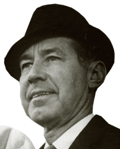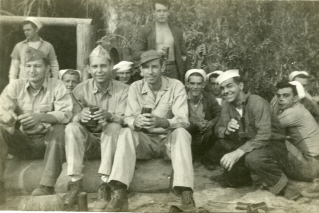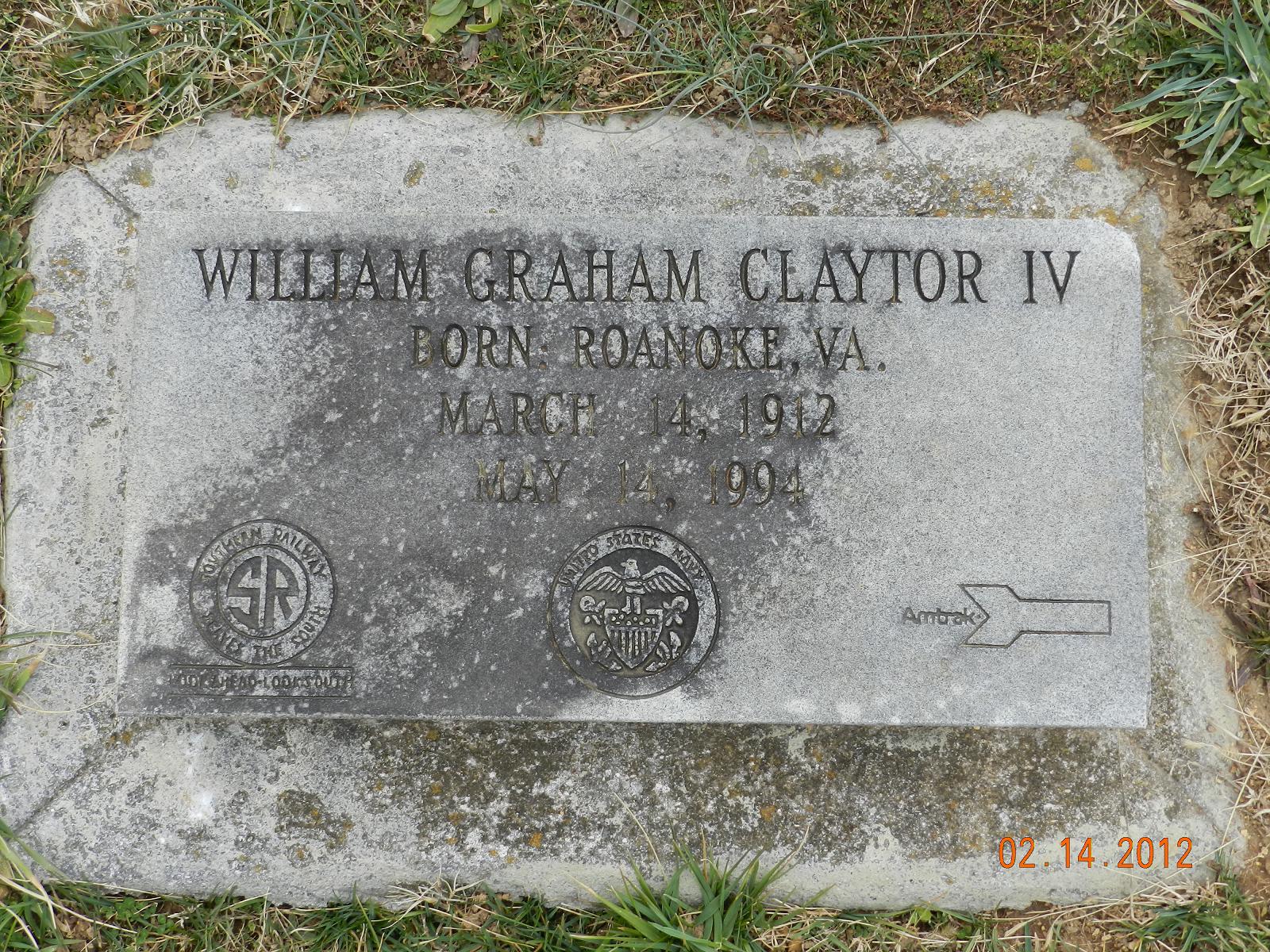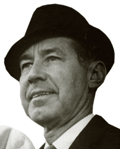William Graham Claytor, Jr. (March 14, 1912-May 14, 1994) was an American lawyer, naval officer, and railroad, transportation and defense administrator for the United States government, working under the administrations of three US presidents.
He is remembered for his actions as the captain of a destroyer escort in World War II which helped to save 316 lives during the USS Indianapolis tragedy. Over 30 years later, Claytor's moderate actions on behalf of the rights of female and gay service personnel as Secretary of the Navy were considered progressive for the time. He is also credited with a distinguished transportation career, including ten years as president of the Southern Railway and 11 years as the head of Amtrak, guiding the passenger railroad through a particularly difficult period in its history.
Education and Early Career
W. Graham Claytor Jr. was born in Roanoke, Virginia, and grew up in both Virginia and Philadelphia. He was he son of Gertrude Harris Boatwright Claytor, a lyric poet, and W. Graham Claytor (1886 - 1971), who was vice-president of Appalachian Power.
Claytor graduated from the University of Virginia in Charlottesville, Virginia in 1933. He then graduated from Harvard Law School summa cum laude in 1936. He then went on to join the prestigious Washington law firm Covington and Burling.
World War II - The USS Indianapolis Tragedy
In 1941, soon after the start of World War II, 29 year-old Claytor attempted to enlist, but was initially rejected by the United States Navy as being "too old." He finally joined under a special provision, based upon his previous experience in sports boating. He was assigned to the Pacific Theater.
Late in the war, Claytor became commander of the destroyer escort USS Cecil J. Doyle on patrol in the Pacific Ocean. In August of 1945, Claytor sped without orders to investigate reports of men floating in the water. As the Doyle approached the area at night, Claytor turned the ship's searchlights on the water and straight up on low clouds, lighting up the night, despite the risk of exposing his ship to possible attack by Japanese submarines. These actions facilitated the rescue of the survivors of the sunken cruiser USS Indianapolis.
The Indianapolis had been on a secret mission, and due to a communications error, had not been reported as overdue (or missing). An estimated 900 men survived the sinking, but spent days floating in life jackets trying to fight off sharks. While only 316 were rescued out of a crew of 1199 who were aboard the Indianapolis, Claytor's actions were widely credited by survivors with preventing an even greater loss of life.
Legal Practice and Southern Railway
After World War II, he resumed the practice of law in Washington DC. He became an officer of the Southern Railway in 1963, serving as president from 1967-1977. Notwithstanding his legal background, Claytor was known as an "operations" man, often riding the company's trains, monitoring and questioning performance. In contrast to his predecessor, D.W. Brosnan, Mr. Claytor was an "employee's President," often chatting with the crews of the trains on which he rode, actively soliciting their suggestions on how to make the railroad run better. He carried this attitude with him during his later service as the President of Amtrak.
U.S. Government service
Claytor served as the Secretary of the Navy under President Jimmy Carter from 1977 to 1979. He is credited with leading the United States Navy into its first recognition of women's right to serve on ships and of rights of gays to leave the service without criminal records. His positions were considered by activists to be progressive for the time, leading to further progress years later in these controversial issues.
In 1979, he was appointed to the position of Deputy Secretary of Defense. While serving as Deputy Defense Secretary, Claytor's military assistant was General Colin Powell.
In the summer of 1979, he took a brief leave from the Defense Department to serve as Acting Secretary of Transportation in Carter's Cabinet. His service at the Transportation Department bridged the tenures of Secretary Brock Adams and Secretary Neil Goldschmidt.
Amtrak
In 1982, Claytor came out of retirement to lead Amtrak. He was recruited and strongly supported by John H. Riley, an attorney who was also the head of the Federal Railroad Administration (FRA) under the Reagan Administration from 1983 to 1989. Secretary of Transportation Elizabeth Dole also tacitly supported Amtrak during Claytor's time there.
Claytor maintained a good relationship with the U.S. Congress during his 11 years in the position. According to an article in Fortune magazine, within 7 years of being in the control of Claytor, Amtrak was generating enough money to cover 72% of it's $1.7 billion operating budget by 1989, up from 48% in 1981. This was achieved mainly through vigorous cost cutting and aggressive marketing. He is credited with bringing political and operational stability to the nation's passenger train network, keeping the railroad functioning properly despite repeated attempts by the administrations of Reagan and his successor George H.W. Bush to "zero-out" its funding.
Claytor retired from Amtrak in 1993.
Legacy and heritage
W. Graham Claytor Jr. was named the Virginian of the Year in 1977. In 1989, he was named Railroader of the Year by Railway Age magazine.
He was the brother of Robert B. Claytor, who became president of Norfolk and Western Railway in 1981 and was the first chairman and CEO of Norfolk Southern after it was formed by merger with the Southern Railway System in 1982. Robert B. Claytor is best remembered by many railfans for reactivating Norfolk and Western's steam program, which rebuilt steam locomotives J-611 and A-1218 at the Roanoke Shops at Roanoke, Virginia, and operated excursion trips. W. Graham Claytor Jr. would occasionally take the helm as engineer with his brother on the steam excursions.
W. Graham Claytor Jr. died in 1994.
At Amtrak's Washington, DC Union Station a passenger concourse was renamed "Claytor Concourse" in his honor.
"The Claytor Brothers: Virginians Building America's Railroad" is a semi-permanent exhibit at the Virginia Museum of Transportation in Roanoke, Virginia.
William Graham Claytor, Jr. (March 14, 1912-May 14, 1994) was an American lawyer, naval officer, and railroad, transportation and defense administrator for the United States government, working under the administrations of three US presidents.
He is remembered for his actions as the captain of a destroyer escort in World War II which helped to save 316 lives during the USS Indianapolis tragedy. Over 30 years later, Claytor's moderate actions on behalf of the rights of female and gay service personnel as Secretary of the Navy were considered progressive for the time. He is also credited with a distinguished transportation career, including ten years as president of the Southern Railway and 11 years as the head of Amtrak, guiding the passenger railroad through a particularly difficult period in its history.
Education and Early Career
W. Graham Claytor Jr. was born in Roanoke, Virginia, and grew up in both Virginia and Philadelphia. He was he son of Gertrude Harris Boatwright Claytor, a lyric poet, and W. Graham Claytor (1886 - 1971), who was vice-president of Appalachian Power.
Claytor graduated from the University of Virginia in Charlottesville, Virginia in 1933. He then graduated from Harvard Law School summa cum laude in 1936. He then went on to join the prestigious Washington law firm Covington and Burling.
World War II - The USS Indianapolis Tragedy
In 1941, soon after the start of World War II, 29 year-old Claytor attempted to enlist, but was initially rejected by the United States Navy as being "too old." He finally joined under a special provision, based upon his previous experience in sports boating. He was assigned to the Pacific Theater.
Late in the war, Claytor became commander of the destroyer escort USS Cecil J. Doyle on patrol in the Pacific Ocean. In August of 1945, Claytor sped without orders to investigate reports of men floating in the water. As the Doyle approached the area at night, Claytor turned the ship's searchlights on the water and straight up on low clouds, lighting up the night, despite the risk of exposing his ship to possible attack by Japanese submarines. These actions facilitated the rescue of the survivors of the sunken cruiser USS Indianapolis.
The Indianapolis had been on a secret mission, and due to a communications error, had not been reported as overdue (or missing). An estimated 900 men survived the sinking, but spent days floating in life jackets trying to fight off sharks. While only 316 were rescued out of a crew of 1199 who were aboard the Indianapolis, Claytor's actions were widely credited by survivors with preventing an even greater loss of life.
Legal Practice and Southern Railway
After World War II, he resumed the practice of law in Washington DC. He became an officer of the Southern Railway in 1963, serving as president from 1967-1977. Notwithstanding his legal background, Claytor was known as an "operations" man, often riding the company's trains, monitoring and questioning performance. In contrast to his predecessor, D.W. Brosnan, Mr. Claytor was an "employee's President," often chatting with the crews of the trains on which he rode, actively soliciting their suggestions on how to make the railroad run better. He carried this attitude with him during his later service as the President of Amtrak.
U.S. Government service
Claytor served as the Secretary of the Navy under President Jimmy Carter from 1977 to 1979. He is credited with leading the United States Navy into its first recognition of women's right to serve on ships and of rights of gays to leave the service without criminal records. His positions were considered by activists to be progressive for the time, leading to further progress years later in these controversial issues.
In 1979, he was appointed to the position of Deputy Secretary of Defense. While serving as Deputy Defense Secretary, Claytor's military assistant was General Colin Powell.
In the summer of 1979, he took a brief leave from the Defense Department to serve as Acting Secretary of Transportation in Carter's Cabinet. His service at the Transportation Department bridged the tenures of Secretary Brock Adams and Secretary Neil Goldschmidt.
Amtrak
In 1982, Claytor came out of retirement to lead Amtrak. He was recruited and strongly supported by John H. Riley, an attorney who was also the head of the Federal Railroad Administration (FRA) under the Reagan Administration from 1983 to 1989. Secretary of Transportation Elizabeth Dole also tacitly supported Amtrak during Claytor's time there.
Claytor maintained a good relationship with the U.S. Congress during his 11 years in the position. According to an article in Fortune magazine, within 7 years of being in the control of Claytor, Amtrak was generating enough money to cover 72% of it's $1.7 billion operating budget by 1989, up from 48% in 1981. This was achieved mainly through vigorous cost cutting and aggressive marketing. He is credited with bringing political and operational stability to the nation's passenger train network, keeping the railroad functioning properly despite repeated attempts by the administrations of Reagan and his successor George H.W. Bush to "zero-out" its funding.
Claytor retired from Amtrak in 1993.
Legacy and heritage
W. Graham Claytor Jr. was named the Virginian of the Year in 1977. In 1989, he was named Railroader of the Year by Railway Age magazine.
He was the brother of Robert B. Claytor, who became president of Norfolk and Western Railway in 1981 and was the first chairman and CEO of Norfolk Southern after it was formed by merger with the Southern Railway System in 1982. Robert B. Claytor is best remembered by many railfans for reactivating Norfolk and Western's steam program, which rebuilt steam locomotives J-611 and A-1218 at the Roanoke Shops at Roanoke, Virginia, and operated excursion trips. W. Graham Claytor Jr. would occasionally take the helm as engineer with his brother on the steam excursions.
W. Graham Claytor Jr. died in 1994.
At Amtrak's Washington, DC Union Station a passenger concourse was renamed "Claytor Concourse" in his honor.
"The Claytor Brothers: Virginians Building America's Railroad" is a semi-permanent exhibit at the Virginia Museum of Transportation in Roanoke, Virginia.
Bio by: Steve
Family Members
Sponsored by Ancestry
Advertisement
Explore more
Sponsored by Ancestry
Advertisement












